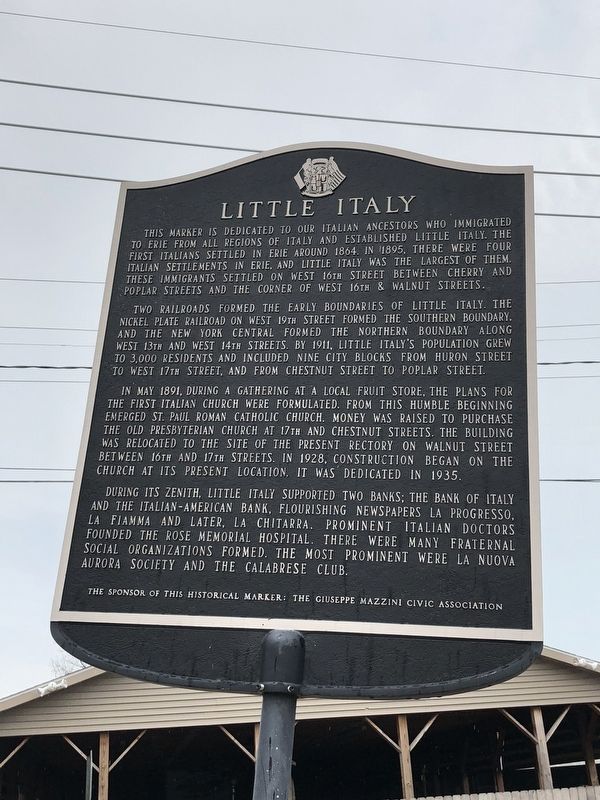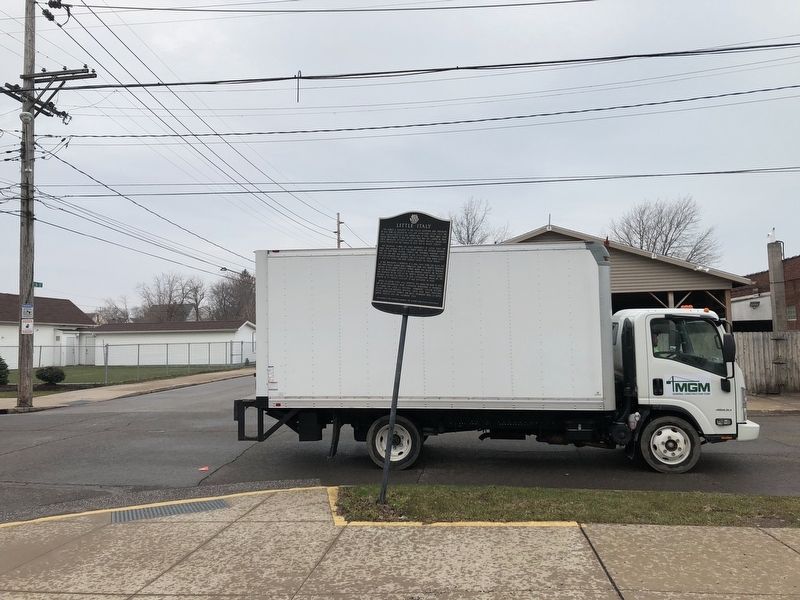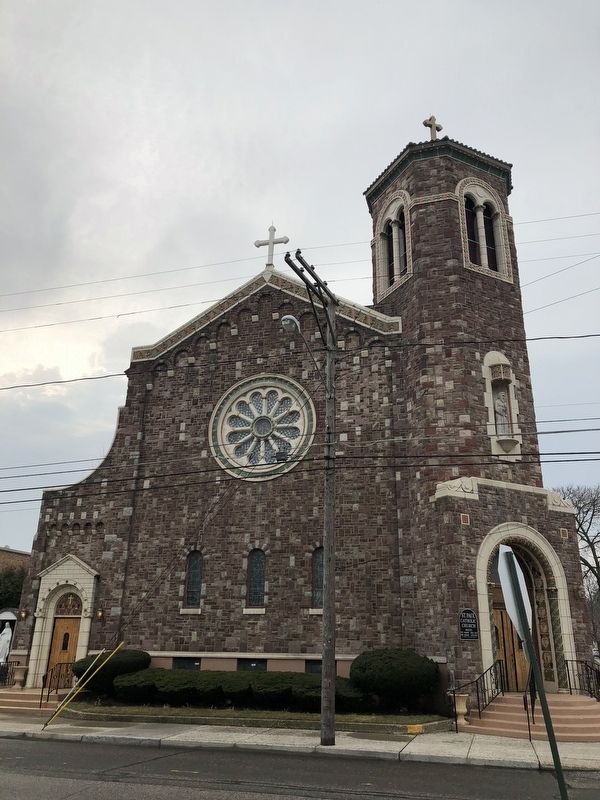Erie in Erie County, Pennsylvania — The American Northeast (Mid-Atlantic)
Little Italy
Two railroads formed the early boundaries of Little Italy. The Nickel Plate Railroad on West 19th Street formed the southern boundary, and the New York Central formed the northern boundary along West 13th and West 14th Streets. By 1911, Little Italy's population grew to 3,000 residents and included nine city blocks from Huron Street to West 17th Street, and from Chestnut Street to Poplar Street.
In May 1891, during a gathering at a local fruit store, the plans for the first Italian church were formulated. From this humble beginning emerged St. Paul Roman Catholic Church. Money was raised to purchase the old Presbyterian Church at 17th and Chestnut Streets. The building was relocated to the site of the present rectory on Walnut Street between 16th and 17th Streets. In 1928, construction began on the church at its present location. It was dedicated in 1935.
During its zenith, Little Italy supported two banks; the Bank of Italy and the Italian-American Bank, flourishing newspapers La Progresso, La Fiamma and later, La Chitarra. Prominent Italian doctors founded the Rose Memorial Hospital. There were many fraternal social organizations formed. The most prominent were La Nuova Aurora Society and The Calabrese Club.
Erected by The Giuseppe Mazzini Civic Association.
Topics. This historical marker is listed in these topic lists: Churches & Religion • Immigration • Industry & Commerce • Settlements & Settlers. A significant historical month for this entry is May 1891.
Location. 42° 6.971′ N, 80° 5.393′ W. Marker is in Erie, Pennsylvania, in Erie County. Marker is at the intersection of Walnut Street and West 16th Street, on the right when traveling north on Walnut Street. Touch for map. Marker is at or near this postal address: 1523 Walnut Street, Erie PA 16501, United States of America. Touch for directions.
Other nearby markers. At least 8 other markers are within walking distance of this marker. Eben Brewer (approx. half a mile away); Harry Kellar (approx. half a mile away); Pro Deo Et Patria (approx. 0.6 miles away); Sr. Bernard Sheridan (approx. 0.6 miles away); Watson-Curtze Mansion (approx. ¾ mile away); Fallen & Missing Comrades (approx. ¾ mile away); Charles Vernon Gridley (approx. 0.8 miles away); Brigadier General August R. "Gus" Pede (approx. 0.8 miles away). Touch for a list and map of all markers in Erie.
Credits. This page was last revised on December 3, 2023. It was originally submitted on April 16, 2018, by Devry Becker Jones of Washington, District of Columbia. This page has been viewed 1,512 times since then and 325 times this year. Photos: 1, 2, 3. submitted on April 16, 2018, by Devry Becker Jones of Washington, District of Columbia. • Andrew Ruppenstein was the editor who published this page.


